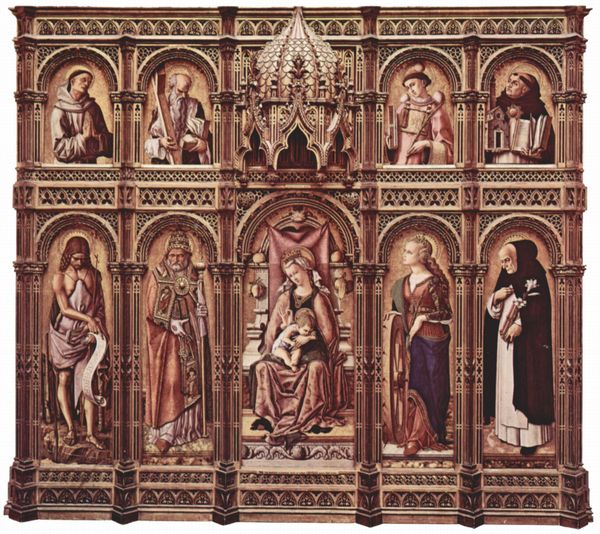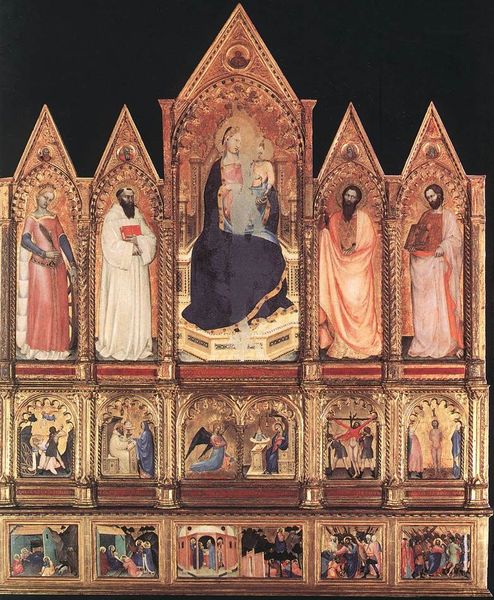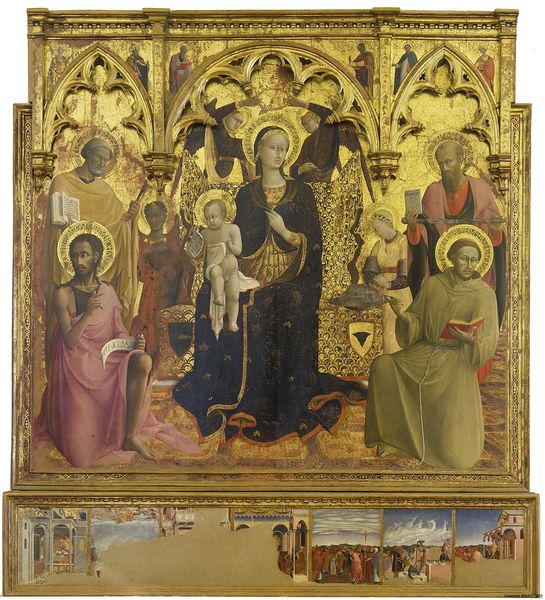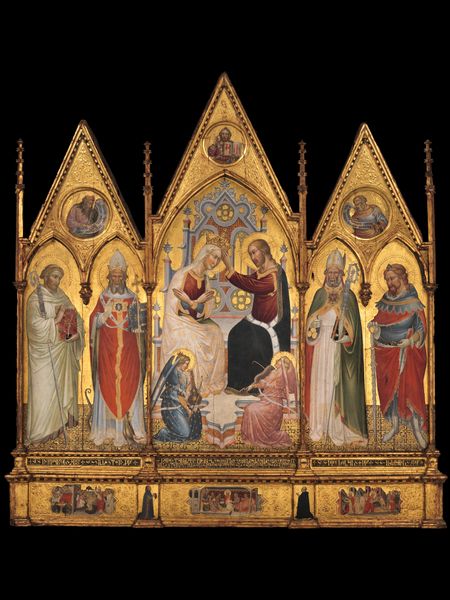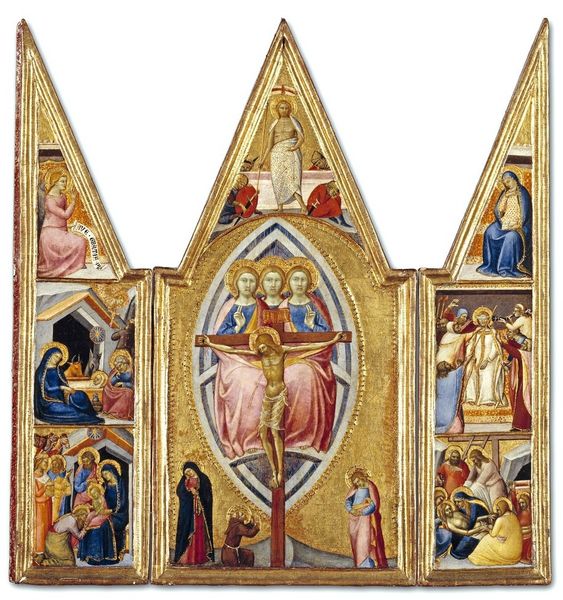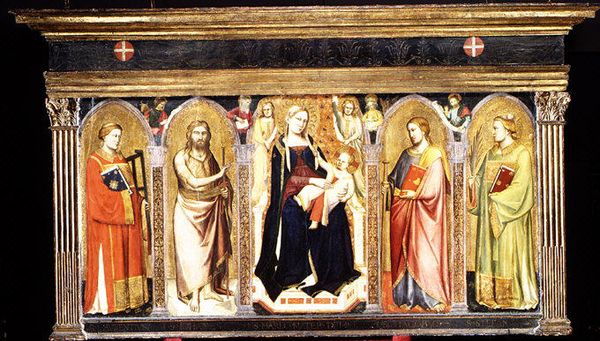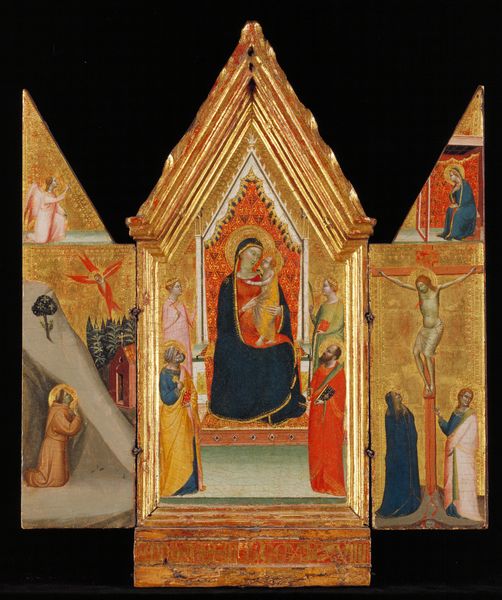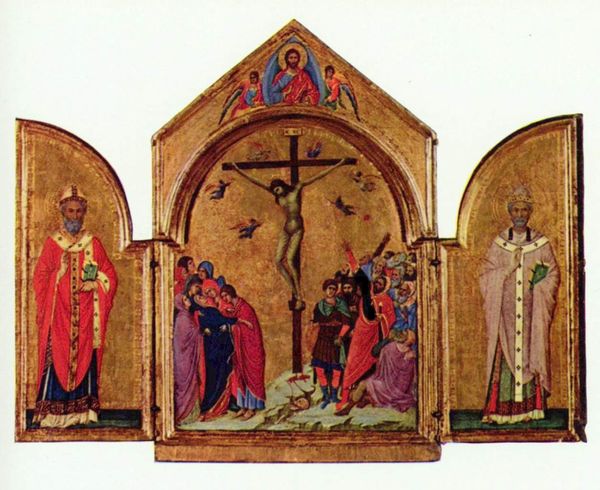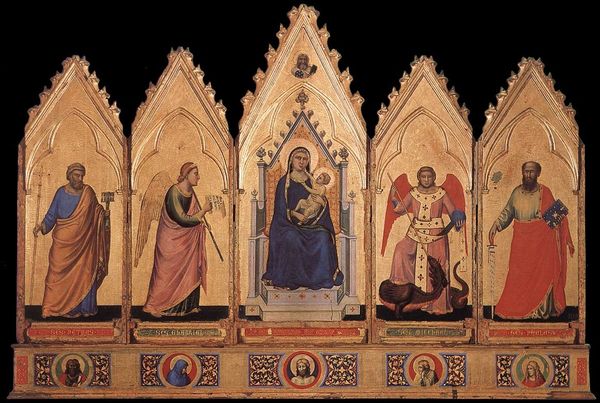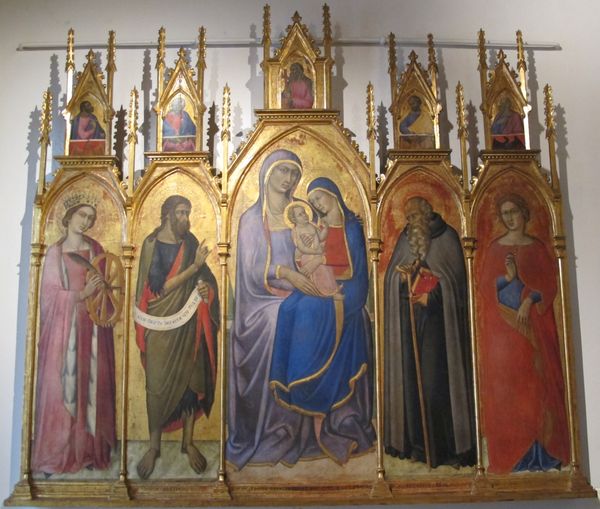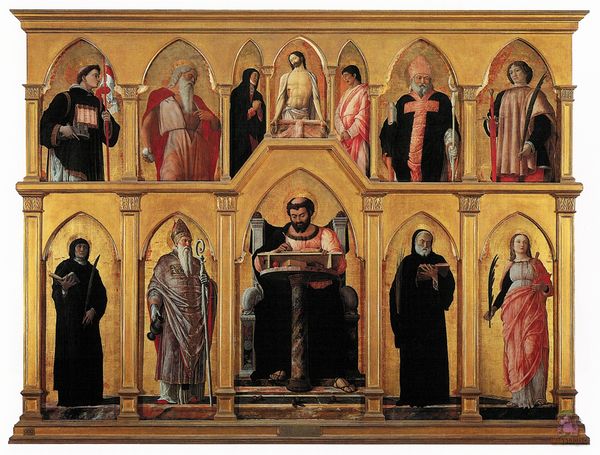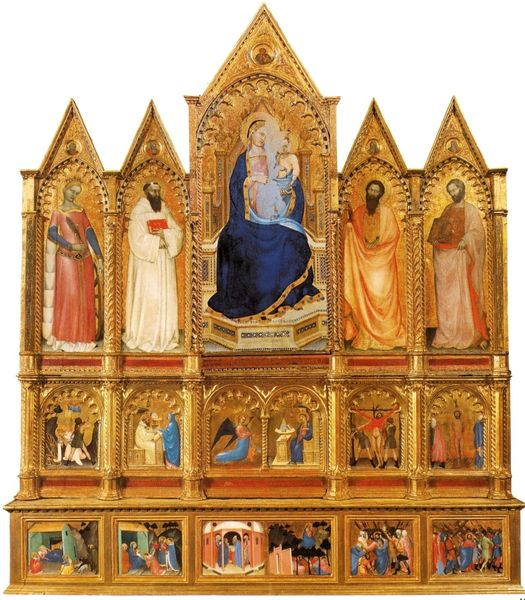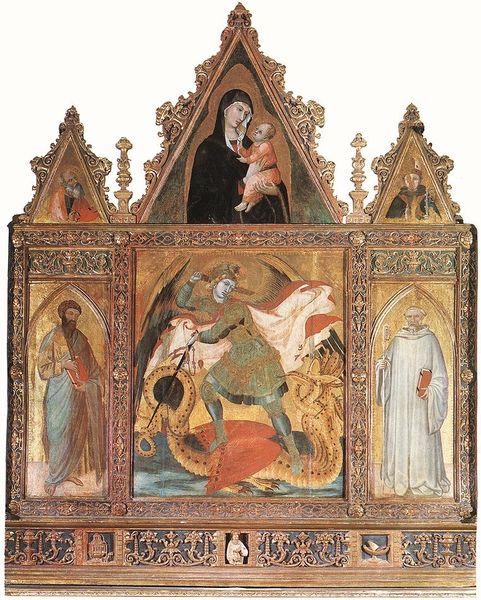
tempera, painting
#
portrait
#
medieval
#
tempera
#
painting
#
sculpture
#
holy-places
#
figuration
#
jesus-christ
#
christianity
#
painting painterly
#
history-painting
#
international-gothic
#
italian-renaissance
#
christ
Dimensions: 250 x 280 cm
Copyright: Public domain
Curator: Here we have Gentile da Fabriano’s "Polyptych of Valle Romita", dating back to around 1400. It is a tempera on wood panel currently held in the Palazzo Brera in Milan. Editor: My first impression is of a stunning, tiered landscape of figures and golden light. The arrangement directs my eyes vertically; it’s both visually rich and serene. Curator: It's a great example of International Gothic. Note how Fabriano combines detailed naturalistic observation with the elegant, elongated figures that were in vogue. The polyptych, a common format, served a distinct function. It was originally commissioned for the Hermitage of Valle Romita and placed at the high altar, acting as an important focus for prayer. Editor: You're right about the detail. Look at the textures of the fabrics, and how the gold leaf shimmers against the matte tempera. I'm drawn to the interplay of lines, and the shapes repeating themselves between all sections, as though building toward that very symmetrical central panel. There's an intense devotion at play, here. Curator: The placement certainly played a role. Religious orders, then as now, utilized imagery to shape devotion, reinforce doctrine, and express wealth and status. The iconography underscores its religious significance: saints surround Mary and Christ and emphasize divine power and the promise of salvation to monastic residents in particular. Editor: Looking at the formal choices – the division of space and color - there's almost a mathematical precision beneath the shimmering surfaces. How else can it inspire reverence without ever crossing over to excessive pomp? The color and material support, but never overwhelm, the content. Curator: Consider also, this was a period of immense political instability in Italy. Works such as these reminded individuals, from any station in life, of eternal truths and were intended to act as bulwarks against earthly struggles. Art was not made in a vacuum. Editor: That tension you describe really is visualized! Its order seeks to reign in what could otherwise overwhelm us with its own spectacle of excess. I see your point clearly. Curator: Looking at this today, one begins to realize just how central works like these were to civic and spiritual life. The polyptych was an interface between the earthly realm and the divine. Editor: And looking at it formally allows you to perceive the material components that so deftly bridged these two worlds. It really provides an experience that resonates through multiple dimensions, doesn’t it?
Comments
No comments
Be the first to comment and join the conversation on the ultimate creative platform.
